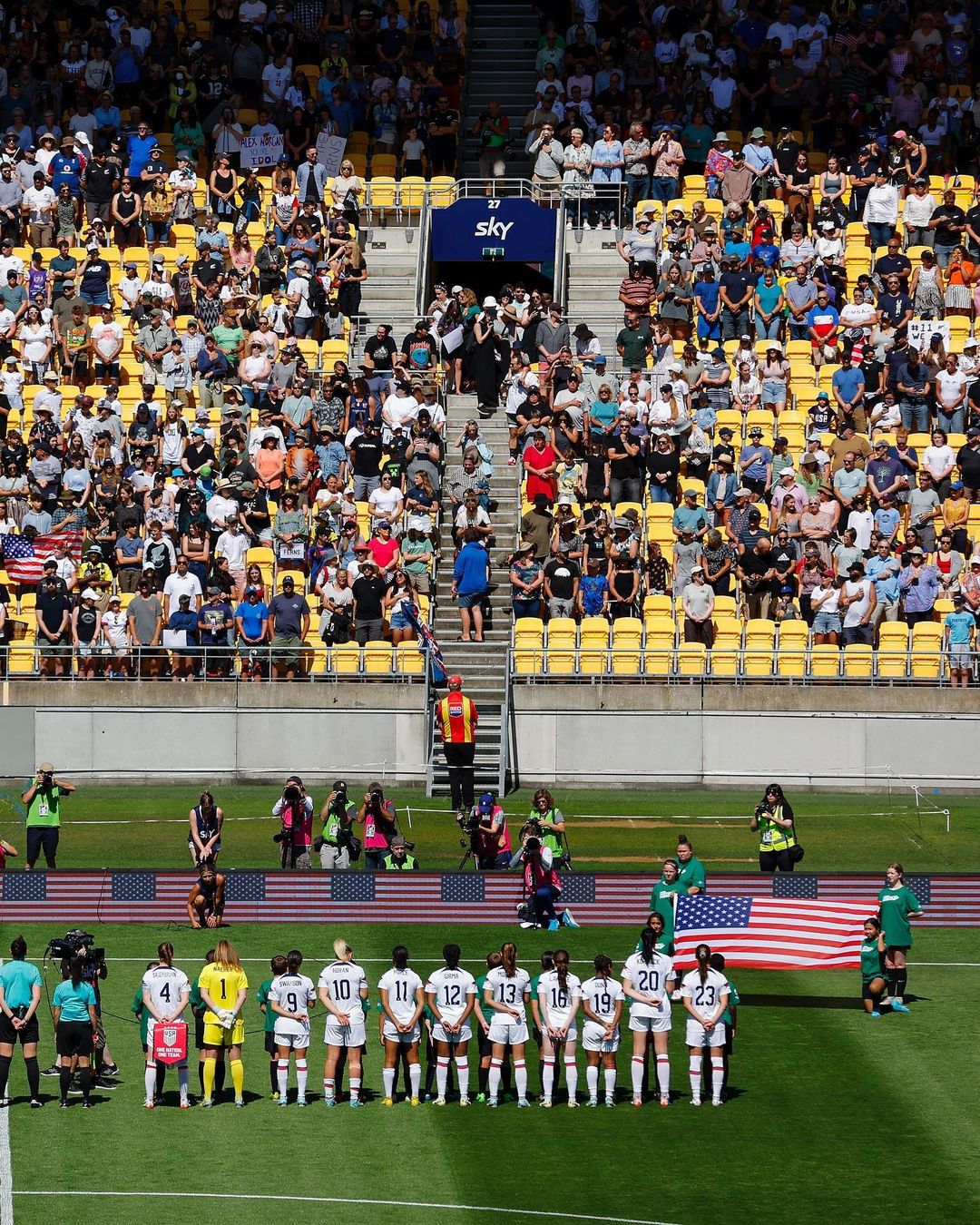Where did it start? Which country has the most titles? Who’s debuting this year? Find out what you need to know about the Women’s World Cup right here.
Women’s football has been blowing up, and this year will mark a new chapter in their rise, as we count down toward the biggest competition in the sport: the Women’s World Cup.
Although the men’s edition is the most popular sporting event on the planet, the women’s category, even though much younger, is picking up pace and has been growing steadily, with talented figures making waves in the sport.
Here are five facts about the top-flight tournament that you should know.
1. The first edition took place in 1991
The 1991 FIFA Women’s World Cup was the first of its kind and it took place in Guangdong, China. But, at the time, FIFA branded the tournament as the “First FIFA World Championship for Women’s Football for the M&Ms Cup.” In the opening match between China and the eventual finalists, Norway, the host nation defeated Norway, 4-0.

As the inaugural edition, only 12 teams took part in the competition. The United States and Norway made it to the finals, where the American team won, 2-1, to be the first team to ever lift the trophy.
2. The United States has the most titles
After becoming the first-ever champions, the United States went on to become the most dominant nation in the history of the tournament. The nation has qualified for all nine editions of the tournament thus far and holds the most titles, having won a total of four. On top of this, they have also reached the semifinals every time, and have never gone home without at least a bronze medal.
The United States National Women’s Football Team won the previous two editions of the competition. Will this year mark their third in a row?
3. The all-time attendance record
In 1991, only a total of 510,000 viewers came to watch the entire tournament. At the time, women’s football was still starting to gain traction in the mainstream football sphere, given that it is a male-dominated sport. But since then, the tournament has been growing in terms of fan attendance.
Come 2015, the competition reached a tournament record of over 1.3 million attendees throughout the entire tournament — a record across all FIFA competitions, though not including the men’s World Cup. This marked a huge milestone for the women’s tournament, signifying a huge growth spurt in interest. From then on, the interest in women’s football has only continued to grow.

The last edition in 2019 hosted in France reached over 1.1 million people in attendance. Now, with women’s football quite possibly bigger than ever, and as the biggest Women’s World Cup yet, will we see a new record?
4. 2023 is their biggest year yet
The 2023 FIFA Women’s World Cup is arguably one of the most historic editions, as the tournament is breaking new ground. This year marks the first-ever World Cup to be jointly hosted by two nations: Australia and New Zealand. In addition, it is also the first time that 32 nations will be competing, from the previous number of 24.
With FIFA welcoming more nations to compete in the pinnacle of football competitions, this is a sign of the remarkable growth of women’s football over the last few years. This is also one reason why FIFA celebrated the buildup of this year’s edition with their biggest trophy tour yet, to welcome all the 32 competitors.
5. Eight nations are making their World Cup debut
It is not just the Philippines that will be making their World Cup debut this year. Given that FIFA has expanded the tournament to include more nations, seven other countries will also be gracing the Women’s World Cup for the very first time. This is a huge deal. Not only does it make for a more competitive tournament overall, but it also signifies just how far the sport has come over the years. Starting from 12 teams in the first-ever edition, and now with 32, women’s football no longer feels like it is on the rise. Instead, it has risen, and now, it has become a mainstream topic in the world of sports.
Along with the Philippines, Haiti, Morocco, Panama, Portugal, Ireland, Vietnam, and Zambia are all celebrating a historic move this year, making their Women’s World Cup debut. For the Philippines, this is a huge step in their football journey, as this is their first World Cup in any football tournament.
Banner image from FIFA.
Related Stories:
The Filipinas: Building on the Structure of Success
LOOK: The Filipinas Welcome World Cup Trophy in Manila
Plan your vacation to the 2023 FIFA Women’s World Cup
